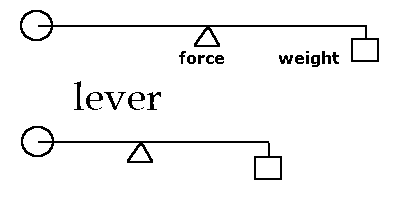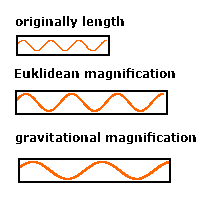Testing the "Snow Globe Theory"
The "snow globe theory" stands or falls with the claim: Gravity enlarges or shrinks massive objects. This change cannot be detected on site without taking the environment into account. Thus, Hawking wouldn't be able to notice any changes in his time machine – a space capsule orbiting a black hole – if its windows were darkened.
This can be verified with a lever. With a lever, neither force nor weight changes with a shorter lever arm. But the torque?
It doesn't change if you reduce the scale. On site, the smaller meter is then the "correct" meter.
This is also where the "ghost mass" becomes apparent. From a distance, the arm is simply smaller.
The torque factor is compensated for by a presumably larger mass. I thank Archimedes.

The explanation of gravity seems to reveal a contradiction. Here, a wooden meter is moved from an inner planet to an outer one. The meter increases in size, as does the wavelength of light. Nevertheless, fewer light waves fit on the stick.
There are two types of scale changes. A diver dives from a ten-meter high diving platform into the water in 1.5 seconds. On a 30-cm television screen, it also takes 1.5 seconds. His speed changes with the spatial scale. This is a Euclidean scale change. Gravitationally, however, the speed changes quadratically. Both the scale of length and the scale of time change..

The relative speed of light, i.e., the outer speed as seen from the inner planet, increases.
Nevertheless, it is not greater there (according to the "snow globe principle" S3).
Ludwig Resch